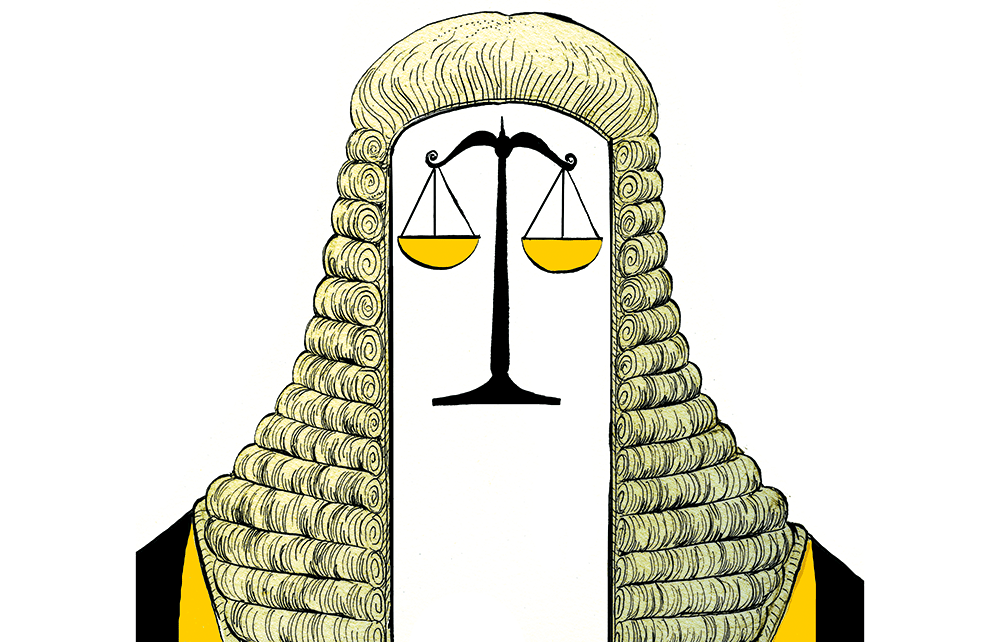In December 1999, the Labour government of the day appointed an eminent judge to conduct a review into the workings of the criminal courts in England and Wales. But when Sir Robin Auld’s report landed on ministers’ desks two years later, they faced fierce resistance to his proposals from, among others, parts of the legal profession. Many of his carefully thought through recommendations were never implemented.
Lawyers, predictably, have voiced alarm
Now, a quarter of a century later, the current Labour administration has an opportunity to make the radical court reforms that the Blair government ducked. The blueprint has been laid out in a compellingly argued 388-page document by another highly respected judicial figure, Sir Brian Leveson.
The case for change is even more urgent than it was two decades ago. The backlog of cases in Crown Courts is nearing 80,000, with some trials not scheduled to take place until 2029. The delays cause untold anguish to victims of crime and leave defendants in limbo, with 17,000 currently on remand in prison, 20 per cent of the jail population. The prospects of justice diminish with every passing month, as witnesses’ memories fade and victims drop out of the process.
Leveson’s key recommendations are strikingly similar to Auld’s. The retired Court of Appeal judge suggests reducing the number of cases that are tried by a jury in Crown Courts to clear blockages in the system and reduce costs: jury trials take far longer and are more expensive than any other type of hearing.
Under Leveson’s plans, a wider range of crimes would be dealt with by magistrates, who typically handle motoring offences, criminal damage and common assault. In future they’d be able to deal with some people accused of possessing indecent images of children, exposure, voyeurism and breaching a stalking order.
There would also be a new hybrid court consisting of a judge and two magistrates. Auld called it an ‘intermediate’ court; Leveson names it the Crown Court Bench Division (CCBD). It would hear more serious cases that currently end up before a jury, even though the likely prison sentence is three years or less. Among the extensive list of offences that could end up before the new CCBD are violent disorder, drug trafficking and sexual assault. Juries would continue to hear the most serious cases, such as murder, rape, and crimes expected to lead to stiff prison terms. In some circumstances, for example, in complicated and lengthy money laundering and fraud prosecutions, judges would sit without a jury.
Lawyers, predictably, have voiced alarm. When the plans were first trailed, the Law Society, which represents solicitors, said: ‘Eroding the fundamental right of jury trial by your peers is a major constitutional change… and should not be seen as a solution to the present backlogs.’ The barristers’ body, the Bar Council, said there was ‘no need to curtail the right to trial by jury – from both a principle and practical position.’ But jury trial, as Leveson points out, is not a constitutional right, and has never been an option for everyone, with 90 per cent of offences already dealt with by magistrates.
The current arrangements, which allow defendants in so-called ‘either-way’ cases, including some cases of theft, criminal damage and drug possession, to opt for a jury trial, are no longer sustainable. Some years ago, I was on a jury trying a man who had allegedly tried to steal a handbag. It was an ‘either-way’ offence that should never have been allowed to use up valuable time at a busy Crown Court in London, but the practice has continued, clogging up the courts to the detriment of victims, defendants and judges in more serious cases.
There has also been opposition to Leveson’s proposals to expand the use of sanctions administered by the police, referred to in the report as ‘Out of Court Resolutions’ (OOCRs). Leveson argues that OOCRs can ease the burden on courts and deliver justice in low-level cases more rapidly but the Victims’ Commissioner, Baroness Newlove says they may be perceived as justice being ‘diluted’.
Over the past decade the use of OOCRs, which include police cautions, community resolutions and penalty notices for disorder, has declined by 35 per cent, partly because officers have been put off by the paperwork involved. A new system of OOCRs was consulted on 12 years ago but is still not fully in force leading to a variety of different approaches across the country. When the criminal justice system sorely needed a credible alternative to prosecution all it got was confusion and complexity.
The report’s focus on OOCRs is therefore welcome, but it misses a crucial point: they need to be simple and quick to be effective. For certain offenders, a straightforward police caution, involving a visit to a police station, a stern word by an officer and a criminal record will be enough to deter further offending. Yet, the police caution has gone out of fashion, as forces have been directed to impose conditions alongside it. Conditions may be appropriate for some criminals, but they are not needed for all. The Leveson proposals present the government with an opportunity to re-think its strategy on OOCRs – and bring back the simple police caution.
At 76, Sir Brian Leveson is wise enough to know the government won’t agree to everything he says. He bears the scars of the public inquiry he chaired into the phone hacking scandal, when ministers refused to allow the second part of the inquiry, into relations between journalists and police, which was to be known as ‘Leveson Two’. Similarly, a number of ideas that the retired judge came up with during a government-commissioned review of the criminal courts in 2015 were considered ‘out of scope’ and were not adopted.
Some of the 45 recommendations in his latest report may run aground too. A proposal that defendants who plead guilty should get a reduction in their prison term of up to 40 per cent, compared to a maximum of 33 per cent at present, risks eroding confidence in sentencing and is likely to hit the buffers of public opinion. And Leveson’s call for Crown Court sitting days to be increased from 110,000 to 130,000 each year will require substantial investment in court capacity.
Nevertheless, Leveson has set a clear course that the government must follow. It cannot afford to be deflected by noises from lawyers who are mistakenly putting tradition ahead of practicality.







Comments